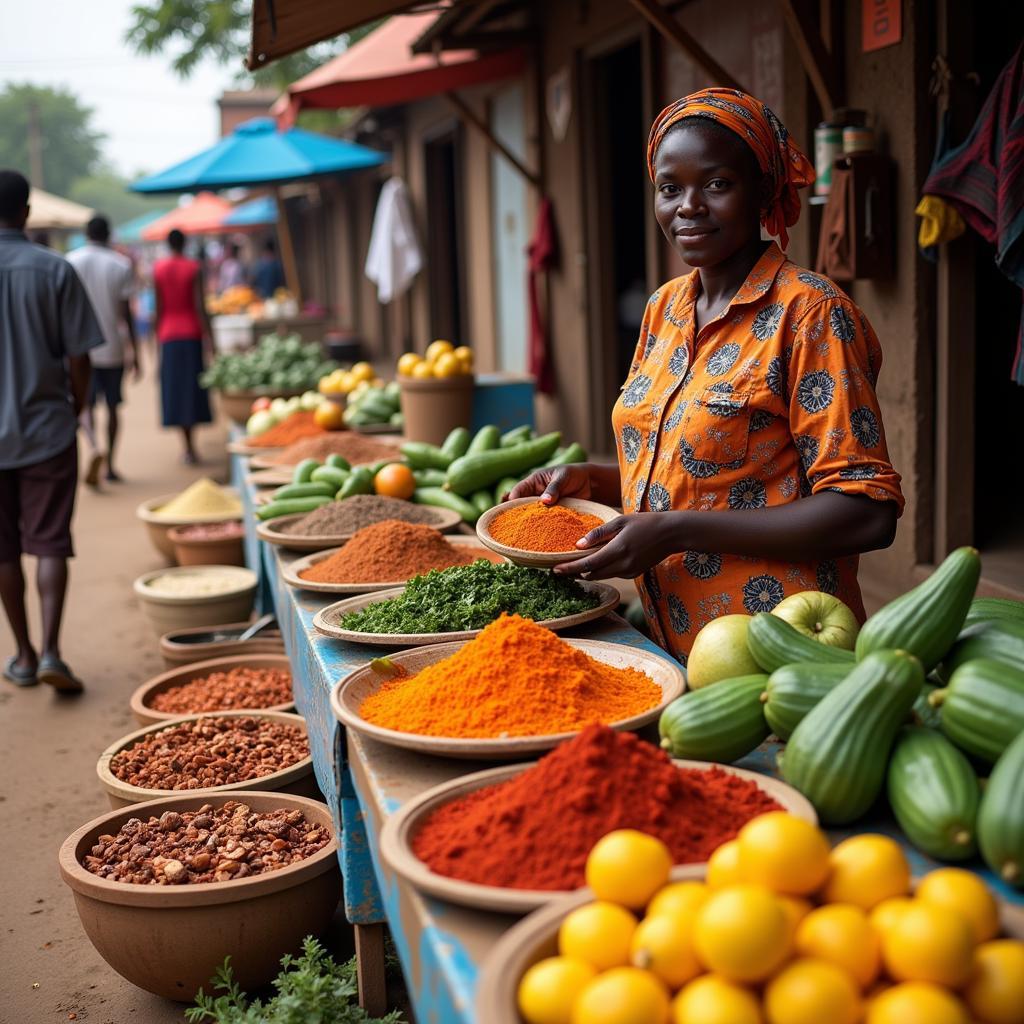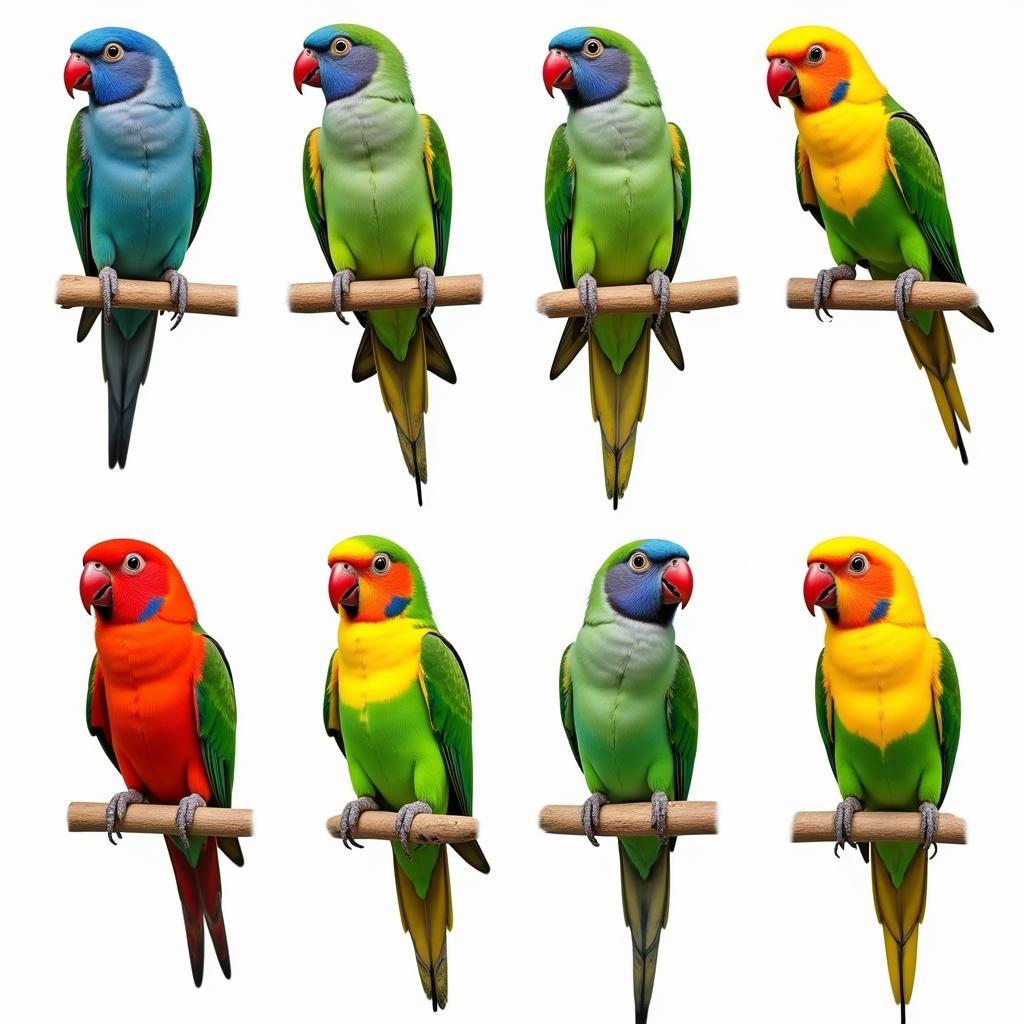African Cichlid Profiles: A Dive into Diversity
African cichlids are some of the most popular aquarium fish in the world. Their vibrant colors, fascinating behaviors, and incredible diversity have captivated hobbyists for decades. Whether you’re a seasoned aquarist or just starting your journey, exploring the world of African Cichlid Profiles can guide you in creating a thriving underwater community.
Unveiling the Cichlid Family
Hailing from the Great Rift Valley lakes of Africa, cichlids belong to the family Cichlidae, known for their complex social structures and specialized feeding habits. Within this family, African cichlids stand out for their dazzling array of colors and patterns, often rivaling the beauty of marine fish.
Navigating the Waters: Types of African Cichlids
Understanding the different types of African cichlids is crucial for successful aquarium keeping. These fish have evolved into distinct groups based on their geographical location and ecological niches.
Lake Malawi Cichlids: Jewels of the Third Lake
Lake Malawi, the southernmost lake in the African Rift Valley, boasts the largest number of cichlid species.
- Mbuna Cichlids: Known for their rock-dwelling (mbuna meaning “rockfish” in Tonga) and aggressive nature, these fish display vibrant colors and intricate patterns.
- Peacocks (Aulonocara): Named for their stunning, iridescent colors, male peacocks often sport elongated dorsal fins reminiscent of their avian namesake.
- Haps (Haplochromis): This diverse group encompasses both peaceful and aggressive species, with a wide range of sizes and color variations.
Lake Tanganyika Cichlids: Ancient Wonders
Lake Tanganyika, the oldest of the African Great Lakes, is home to a unique and ancient lineage of cichlids.
- Tropheus Cichlids: Recognizable by their torpedo-shaped bodies and bold black and white patterns, Tropheus are known for their territoriality.
- Frontosa Cichlids: These majestic fish, with their distinctive humpheads and striking blue and white coloration, are highly sought after by experienced aquarists.
- Shelldwellers: As their name suggests, these cichlids inhabit empty snail shells, using them for both protection and breeding.
Lake Victoria Cichlids: A Story of Resilience
Lake Victoria, once teeming with hundreds of cichlid species, has faced significant ecological challenges. Despite this, conservation efforts are underway to protect the remaining species.
- Victoria Cichlids: Known for their adaptability and diverse feeding habits, Victoria cichlids exhibit a wide range of colors and patterns.
Creating a Thriving Cichlid Aquarium
Setting up a suitable environment is key to the well-being of your African cichlids.
- Tank Size Matters: African cichlids, especially the larger species, require ample swimming space to prevent aggression. A minimum tank size of 55 gallons is recommended for most species.
- Water Chemistry is Crucial: Maintaining the correct water parameters is vital for cichlid health. African cichlids thrive in hard, alkaline water with a pH between 7.8 and 8.6.
- Aquascaping for Success: Creating a naturalistic habitat with rocks, caves, and plants provides hiding places and reduces stress.
The Art of Cichlid Keeping: Diet and Social Dynamics
Feeding your African cichlids a varied and nutritious diet is essential for their health and vibrant coloration.
- Carnivores, Herbivores, and Omnivores: Understanding the dietary needs of your specific cichlid species is crucial. Some cichlids are primarily carnivorous, while others are herbivorous or omnivorous.
- High-Quality Foods: Offer a mix of high-quality cichlid pellets, flakes, and frozen or live foods, such as brine shrimp and bloodworms.
African Cichlids: A Legacy of Beauty and Diversity
African cichlids, with their captivating beauty, fascinating behaviors, and incredible diversity, offer a rewarding and enriching experience for aquarium enthusiasts of all levels. By understanding their unique needs and characteristics, you can create a thriving underwater world that showcases the splendor of these African treasures.
Frequently Asked Questions About African Cichlids
1. What is the average lifespan of an African cichlid?
African cichlids typically live for 5 to 10 years in captivity with proper care.2. Are African cichlids aggressive?
While some African cichlids are known for their territorial behavior, many species can coexist peacefully with appropriate tank mates.3. Can I keep African cichlids with other types of fish?
It's generally not recommended to mix African cichlids with other fish species due to their specific water requirements and potential aggression.4. How often should I feed my African cichlids?
Feeding your cichlids twice a day, offering only as much food as they can consume in a few minutes, is recommended.5. What are the signs of illness in African cichlids?
Loss of appetite, lethargy, white spots, fin clamping, and erratic swimming can all be signs of illness in cichlids.Explore Further: Delve Deeper into the World of African Cichlids
- Discover detailed profiles of specific cichlid species to find the perfect fit for your aquarium.
- Learn about breeding African cichlids and raising fry.
- Connect with other cichlid enthusiasts through online forums and communities.
For personalized guidance on African cichlid care or to explore our wide selection of cichlids, don’t hesitate to contact us. Call us at +255768904061, email us at [email protected], or visit our store in Mbarali DC Mawindi, Kangaga, Tanzania. Our dedicated team is available 24/7 to assist you in creating a vibrant and thriving aquatic environment.



